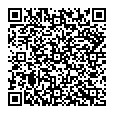
07 dic 2024
The recent implementation of the EU's Mica regulation in Italy marks a significant step in aligning the country's crypto asset framework with European standards.
The decree, effective from September 14, introduces a stringent sanction system, distinguishing between severe criminal penalties and a broad range of administrative fines.
The transitional provisions allow certain entities to operate until June 2025, provided they apply for authorization.
The Bank of Italy and Consob are empowered to enforce these regulations, ensuring compliance and transparency.
This commentary explores the implications, challenges, and opportunities presented by this regulatory shift.

Italy has taken a significant step in aligning its crypto asset regulations with the European Union's standards by adopting the Mica regulation. Published in the Official Gazette No. 215 on September 13, the legislative decree 129/2024 provides Italy with a comprehensive framework for implementing EU directives on crypto assets. This regulation came into effect on September 14, with transitional provisions allowing certain entities to continue operations until June 30, 2025, under specific conditions. These entities must be registered with the Oam by December 27, 2024, and apply for authorization in Italy or another EU member state by June 30, 2025. They can operate during the authorization process until a decision is made, but no later than December 30, 2025. The Italian legislator has minimized the transitional period in line with recommendations from the European Securities and Markets Authority (Esma). The decree introduces a rigorous sanction system, featuring both criminal and administrative penalties. Criminal sanctions are reserved for the most severe violations, such as financial misconduct, punishable by imprisonment from six months to four years and fines ranging from 2, 066 to 10, 329 euros. The scope of administrative sanctions is broader, covering a wide range of infractions. These fines can be increased if the benefit gained from the violation exceeds the maximum limits, potentially doubling the penalty amount. The Bank of Italy and Consob are authorized to impose additional measures, such as public declarations identifying the responsible party and the nature of the violation, or injunctions to cease and desist from the offending behavior. Particularly severe penalties are imposed for violations involving insider trading, unlawful disclosure of privileged information, or market manipulation, with fines ranging from 5, 000 to five million euros. The new regulations also specify the conditions for applying administrative fines to entities. The sanctioning authority lies with the Bank of Italy and Consob, depending on their respective competencies. For administrative sanctions related to the issuance, public offering, and admission to trading of electronic money tokens, the Bank of Italy applies the sanctions according to the procedure outlined in Article 145 of the Tub. The explanatory report clarifies that the administrative sanction procedure and the special rules for appeals in the Court of Appeal are the same as those provided in the Tub. Finally, the Bank of Italy and Consob are tasked with reporting sanctions and administrative measures to the Abe and Aesfem as required by Mica.
